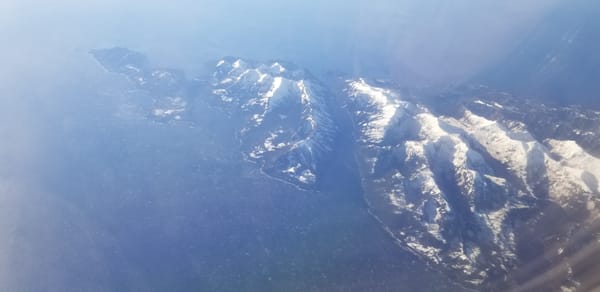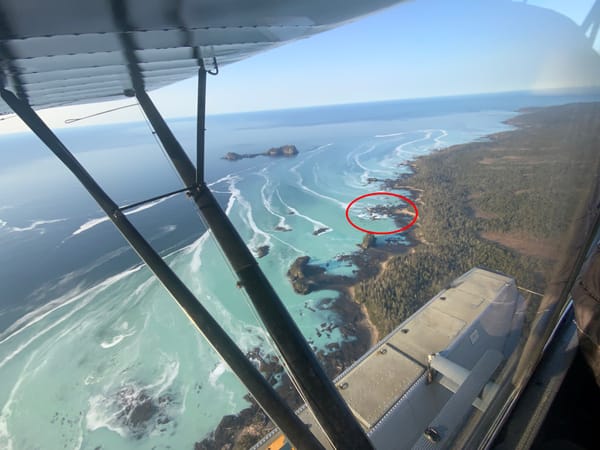Herring Scrap 36 - On Expanding Commercial Fishing Access to Prince William Sound & Kayak Island
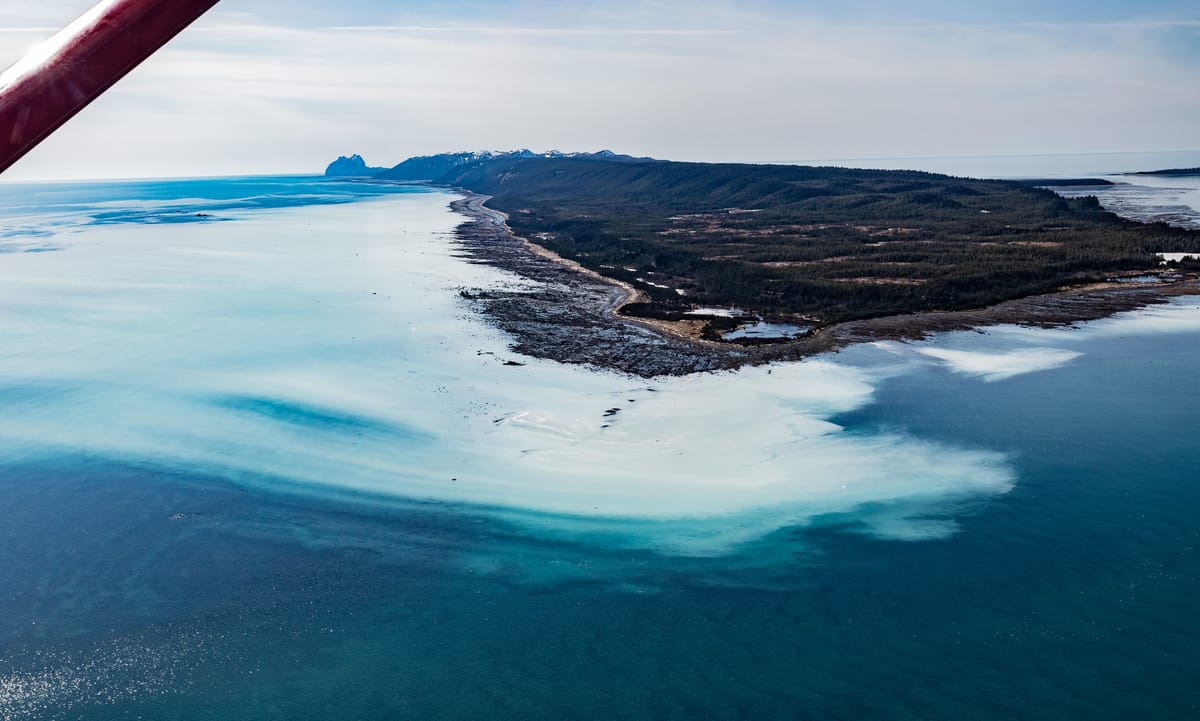
As the Southeast Alaska Board of Fisheries meeting begins, I'd like to tell you about what the Board of Fisheries did back in December at their meeting for Prince William Sound. They transformed the regulatory structure of herring fishing there through three major policy moves, and I think that those moves have a lot to do with the direction that the State of Alaska has previously telegraphed via the Herring Revitalization Committee.
In those previous posts about Herring Revitalization Committee (part one and part 2), I described how the fundamental intention behind that Joint Committee of the Commercial Fisheries Entry Commission (CFEC) and the Board of Fisheries (BoF) is to open up herring fishing in Alaska in more seasons for more reasons. The role of the CFEC in that project is to generalize herring permits so that they no longer come with product-specifications that restrict the seasonality of the permits; the role of the Board of Fish is to alter the fishing regulations to allow for all-season fishing. As the Southeast Alaska meeting approaches, it is important to understand that the Board made significant moves in that direction at the meeting in Prince William Sound.
I'll start this Scrap by briefly describing the recent history of herring fisheries in that area, then I'll describe those three policy moves, and then I'll focus on Kayak Island, an area that has been newly opened for exploratory herring fishing.
In the years following the Exxon Valdez oil spill, herring all but disappeared from Prince William Sound and have scarcely come back since. After the oil spill, there were a couple years of seemingly good fishing, but then all the herring got sick or otherwise disappeared and have never come back in any way that seems anything like what it was before, falling under threshold in most years.

The literature on PWS herring, much of which has been produced under the auspices/funding of the Exxon Valdez Oil Spill Trustee Council, has seemed a little lost when I've looked into it in the past. The EVOSTC collection offers a hodgepodge of synthesis papers that collectively seem to exonerate all of the likeliest seeming human causes for the herring collapse - Exxon Valdez wasn't the cause, over-fishing wasn't the cause, salmon hatcheries weren't the cause, and pound fishing wasn't the cause, they collectively aver - instead reducing those collective problems to vaguely attributed disease.
Yet, it is well understood that herring aren't there like they were before they were fished hard for a few years after a catastrophic oil spill. Make of that what you will. Me? I think it was bad - bad! bad! bad! - management that allowed for herring fishing to proceed in the years immediately following the oil spill.
Here's the quarter page ad that Exxon took out in the Sitka Sentinel back on September 7, 1990, a year and a half after Exxon poisoned Prince William Sound but still a little while before the herring collapse was understood. Here, Exxon cashed in on the great PR offered by ADF&G's terrible decision to promote a fishery after an oil spill:

Now, even though recovery to pre-spill levels hasn't nearly occurred, ADF&G has identified that in the last few years, herring populations in Prince William Sound have been ever-so-slightly above threshold. Back in the fall they opened PWS up to the fall food/bait fishery for the first time since 1998. At least a little bit of herring fishing has happened there in the last few months - I don't know how much or how successfully.
It was in that context that the Board of Fish met in December, and made their three major policy gestures:
a) They restructured the allocational-scientific-bureaucratic herring year to match the calendar year (Jan-Dec) instead of running from July 1-June 30 as had been the case before the December meeting.
b) They set a new regulation indicating that 80% of what goes unharvested by the sac roe fisheries is available to the food and bait fishery.
c) They subdivided a remote area of the district - Kayak Island - where the most epic herring spawning aggregation occurs, opened it up to all herring fisheries, and set the regulations so that whatever is taken from there doesn't reduce what can be taken from the rest of the Prince William Sound area
The proposals had been developed by Cordova District Fishermen's Union in collaboration with ADF&G. At the meeting, from what I can tell, the proposals were met with a minimum of opposition and buoyed by the enthusiasm of a few. This trio of changes transforms the nature of herring fishing in that region. The first pair of dorky little changes has a profound impact, as described below this excerpted table of the (previous) allocation structure from 2024-25 (before the meeting):

The allocation structure pictured above for the Guideline Harvest Levels for various Prince William Sound fisheries in 2024-25, established before the new regulations came into place. Under previous regulations, the herring year began on July 1 - the year started with the 16% allocation to the fall food and bait fishery, and then the fishing year ended with the largest allocation fisheries - the springtime sac roe fishery and spawn on kelp fisheries. Under the new guidelines, the year starts with the big allocation to the springtime fisheries, but then 80% of what goes unharvested in the springtime fisheries becomes available for food and bait. This gives those later-year fisheries a much bigger possible bite of the total allocation.
That outcome - to give later-year herring fisheries a bigger possible bit of the total allocation while at the same time not taking allocation away from the springtime fisheries - matches the profile of the work that the Herring Revitalization Committee has set out to do; those Board of Fish moves pave the way for the CFEC to follow suit with any changes to the permitting structure that they might like to make, sooner or later.
The rest of this scrap deals with the third change, the opening of a new area - Kayak Island - to under-regulated exploratory fishing from a range of permit holders.
Opening Kayak Island
A couple years ago, reader B asked me if I could think of any places where herring populations had never been fished. At the time I said no, I couldn't. I wasn't thinking about Kayak Island in answering that, though. I can't say for sure that no herring fishing happened there during the reduction era, but I don't remember ever reading that it had.
At that December meeting, the Board voted in favor of regulations that will effectively open a brand new herring fishery centered around faraway remote Kayak Island, part-way between Cordova and Yakutat. The island's jutting presence against the dramatic coastline of the Gulf makes it a gathering spot - for shipwrecks, for plastic pollution, for herring, for sand lance, for map-fired imaginations.
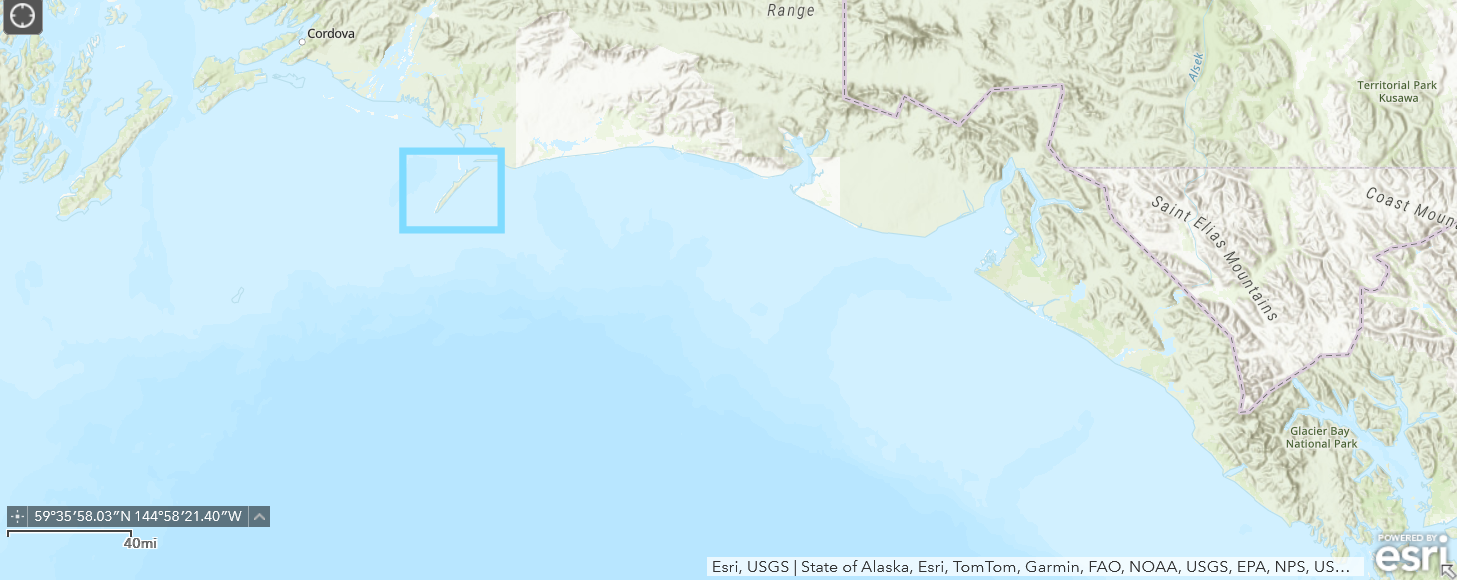

At left, Kayak Island outlined in blue. At right, a map from ADF&G staff comments for Proposal 99 to establish the Kayak Island Herring District. showing the two districts which ADF&G will "separately manage the herring biomass" of.
The change to create the new fishery passed easily, just as the others had.
At first, Kayak Island will be opened for exploratory fishing for anybody that has a Prince William Sound herring permit, of whatever type. In their comments at the meeting, the reps from the Cordova District Fishermen's Union suggested that they didn't think the seiners would want to risk their nets in those waters, but that it was expected to be a nice opportunity for gill-netters and for commercial wild spawn on kelp harvesters. After he said that, a seiner came up to the mic and acknowledged that he would likely hit the run at Kayak Island on his way up north following the Sitka fishery. I'll bet he isn't the only one; many of the Southeast herring seine permit holders also hold PWS herring permits.
Even though they haven't been doing biomass assessments, ADF&G has been monitoring the Kayak Island stock during spawning season for some years now, whether directly or via partnership projects funded by Exxon Valdez Oil Spill Trustee Council (EVOSTC). One EVOSTC paper describes the various efforts that they've gone to to begin to monitor the Kayak Island stock; they sent a pair of observers with a drone to camp out on the island, but it was cold and miserable. They mounted a camera overlooking water on the bluff that transmitted photos 4 times a day; even at that height, the angle wasn't enough to discern spawning activity except by bird presence.
Meanwhile, ADF&G survey records on their Prince William Sound Herring Aerial Survey website indicate that they've visited Kayak Island a couple times every April for at least the last decade. In most recent years, those couple days of surveying have been enough to establish that greater herring spawning activity is going on there than in Prince William Sound. In the meetings one fisherman threw out the number 30,000 tons to describe what the biomass there might be – but from the pictures I would bet that with more attention on Kayak Island herring, ADF&G will identify that the number is actually well above that.
The photos collected during those surveys reveal that something awesome is happening there every spring. And so I'm sorry to say that as of that December meeting, it is now available to be fished on.
I want to share a resource with you - this is ADF&G's ArcGIS webmap for Aerial Surveys of herring in Prince William Sound (and Kayak Island). If you open it you'll find the below interface, and by using the dropdown menu for year and survey date you can browse photos and other observations from the surveys that have taken place there in the last decade+. Circles with camera icons will bring you to aerial photography.

I went through many of the Department's hundreds of photographs of Kayak Island area during their visits to Kayak Island during spawning season in the course of the last 11 seasons. – And it's interesting to be able to do this, right? That from my internet connection anywhere I can tap into the last decade of agency surveillance of an unfished fish population. This type of organized, accessible, visual intel isn't something that was available, for instance, when ADF&G expanded the fishing district in Sitka to encompass Kruzof Island, Salisbury Sound, or South-of-Goddard. I certainly can't go back and see what any of those populations looked like in the 5-10 years before they were first fished. We're in a fundamentally different informational epoch than what the Board of Fisheries members were in when they initiated "exploratory" fishing efforts in Southeast Alaska in the 1970s, and this is a moment where we can really witness that difference.
Here from the ADF&G aerial survey site, I've included one photo apiece from 9 recent years. This is what it looked like during spawning season at Kayak Island, before the fishing began.
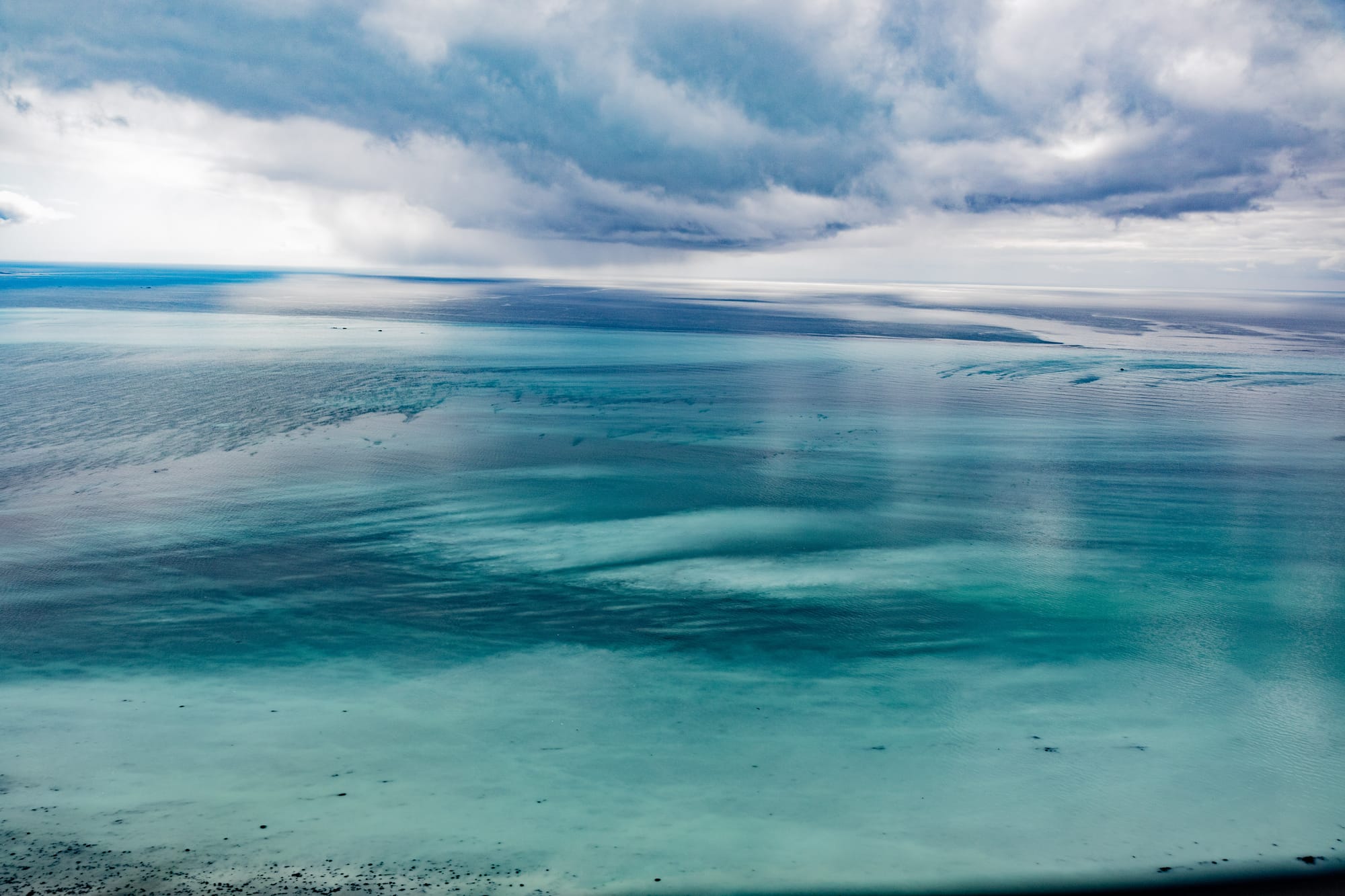
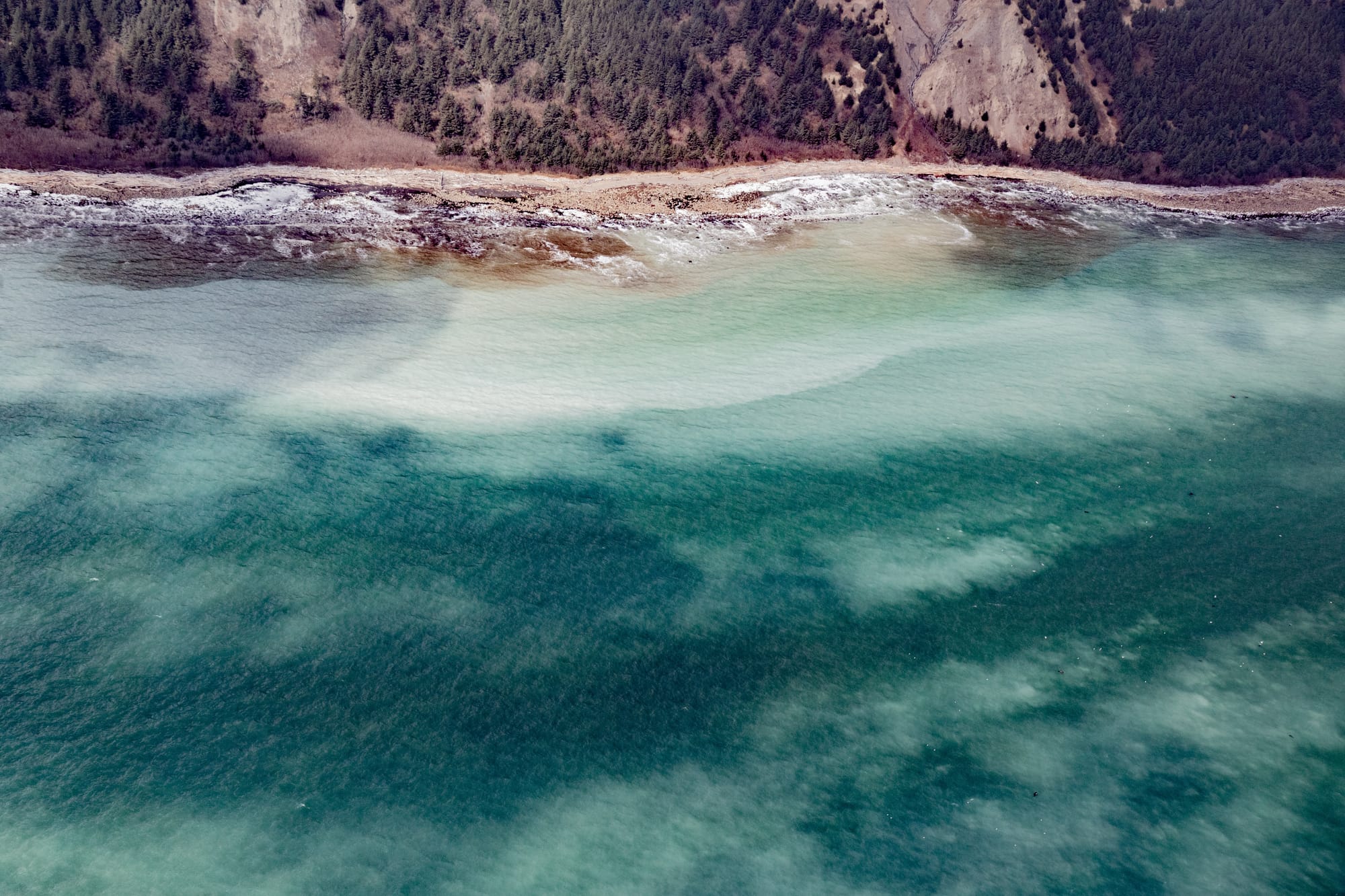
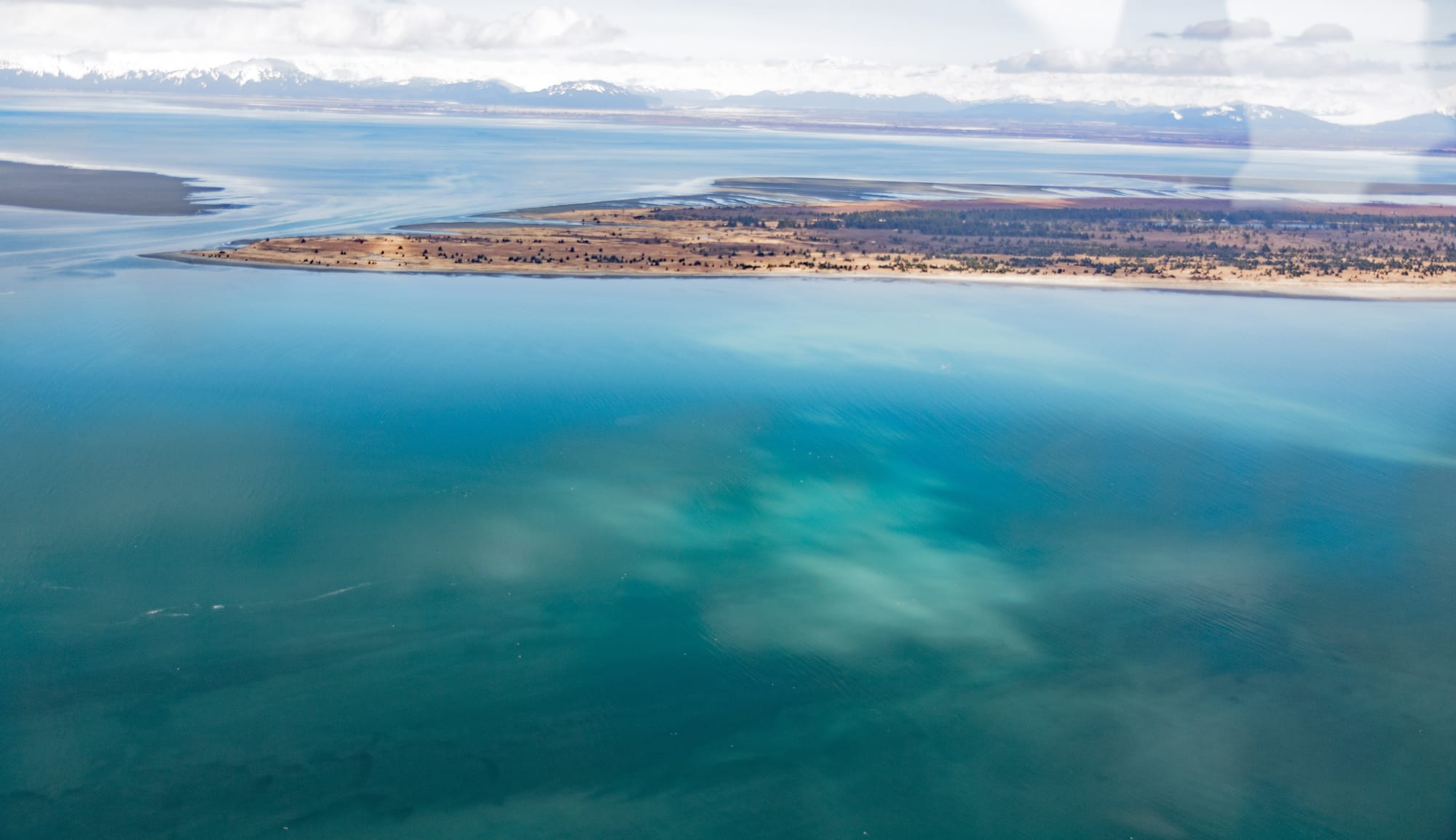
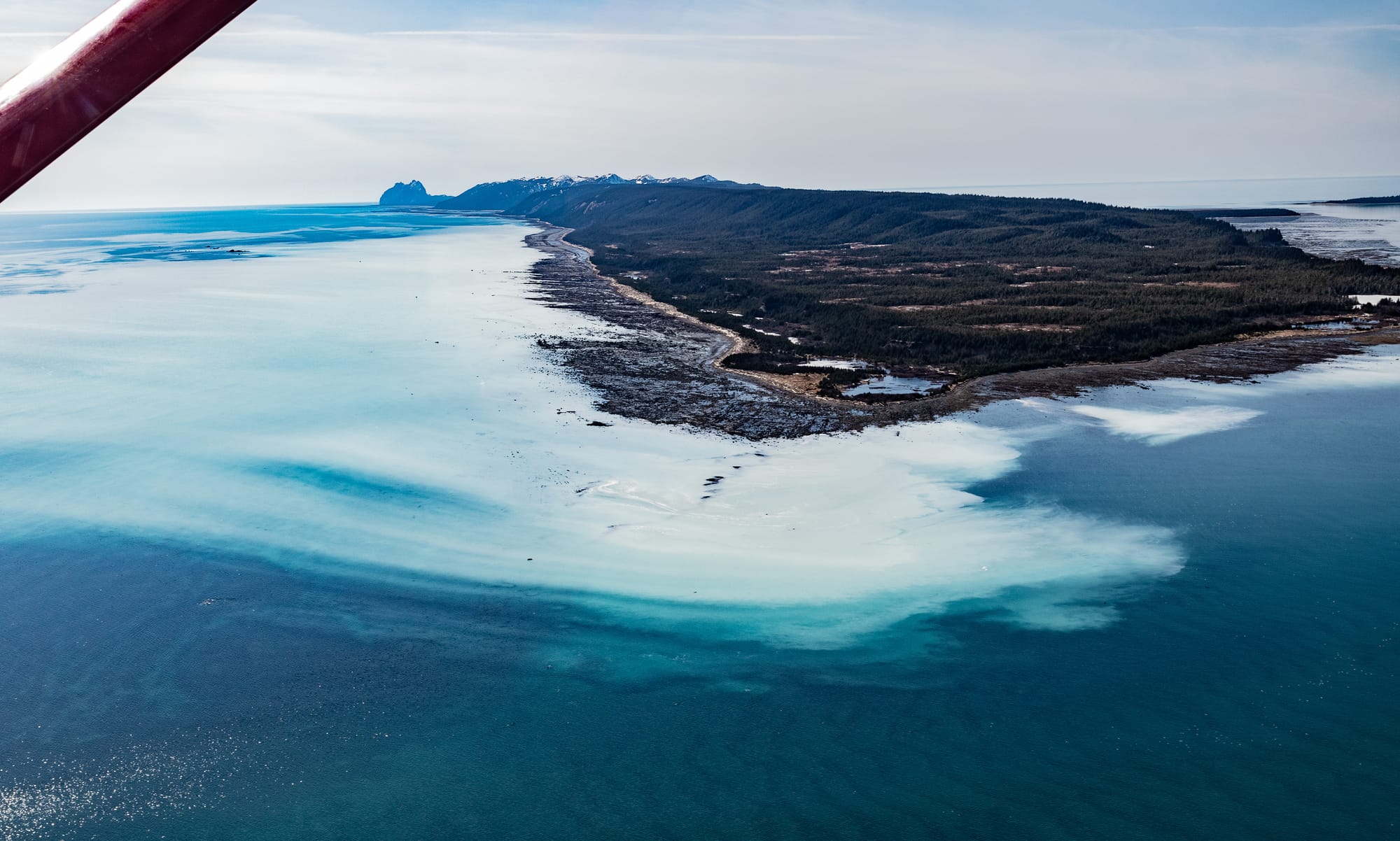
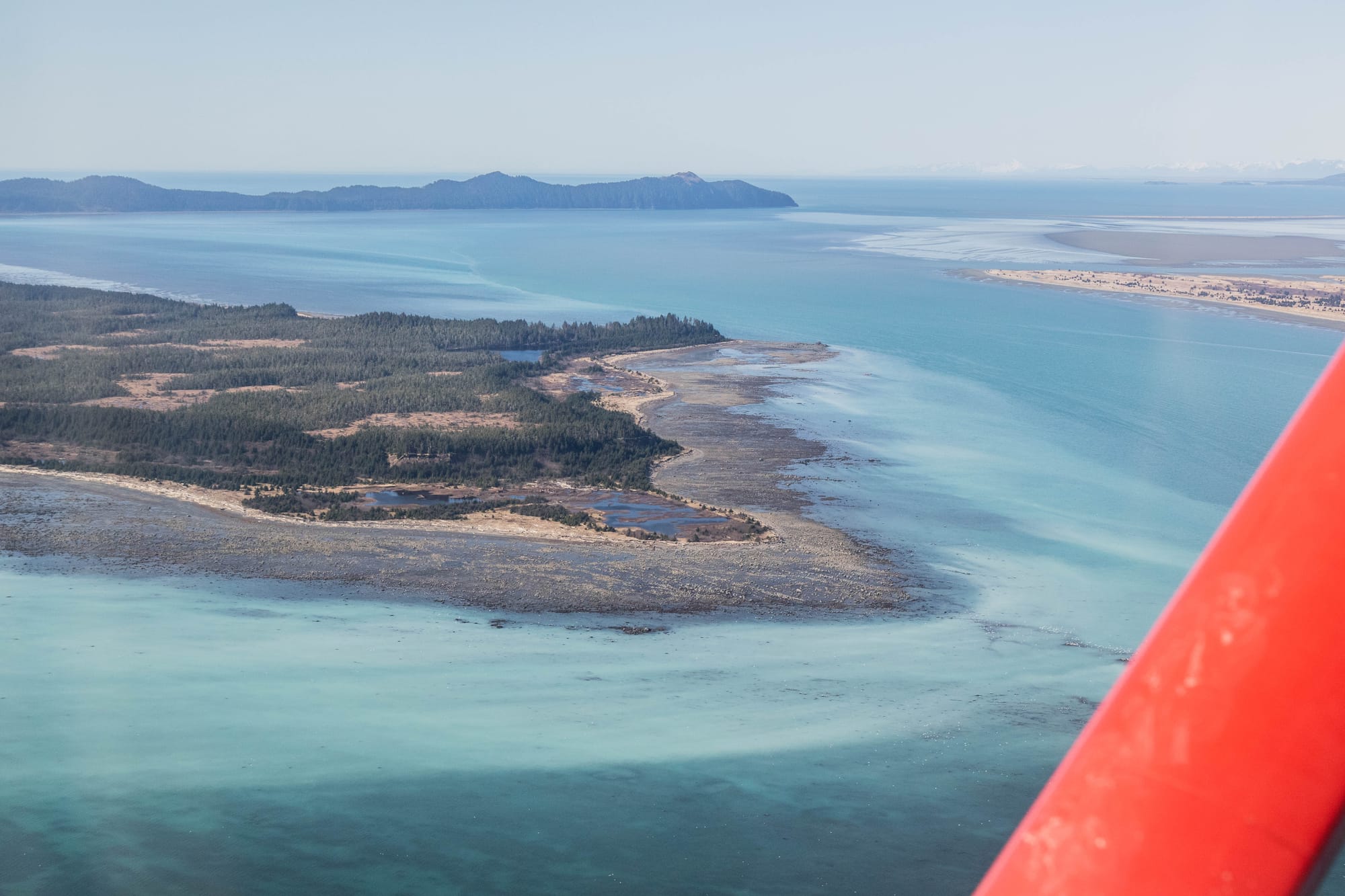
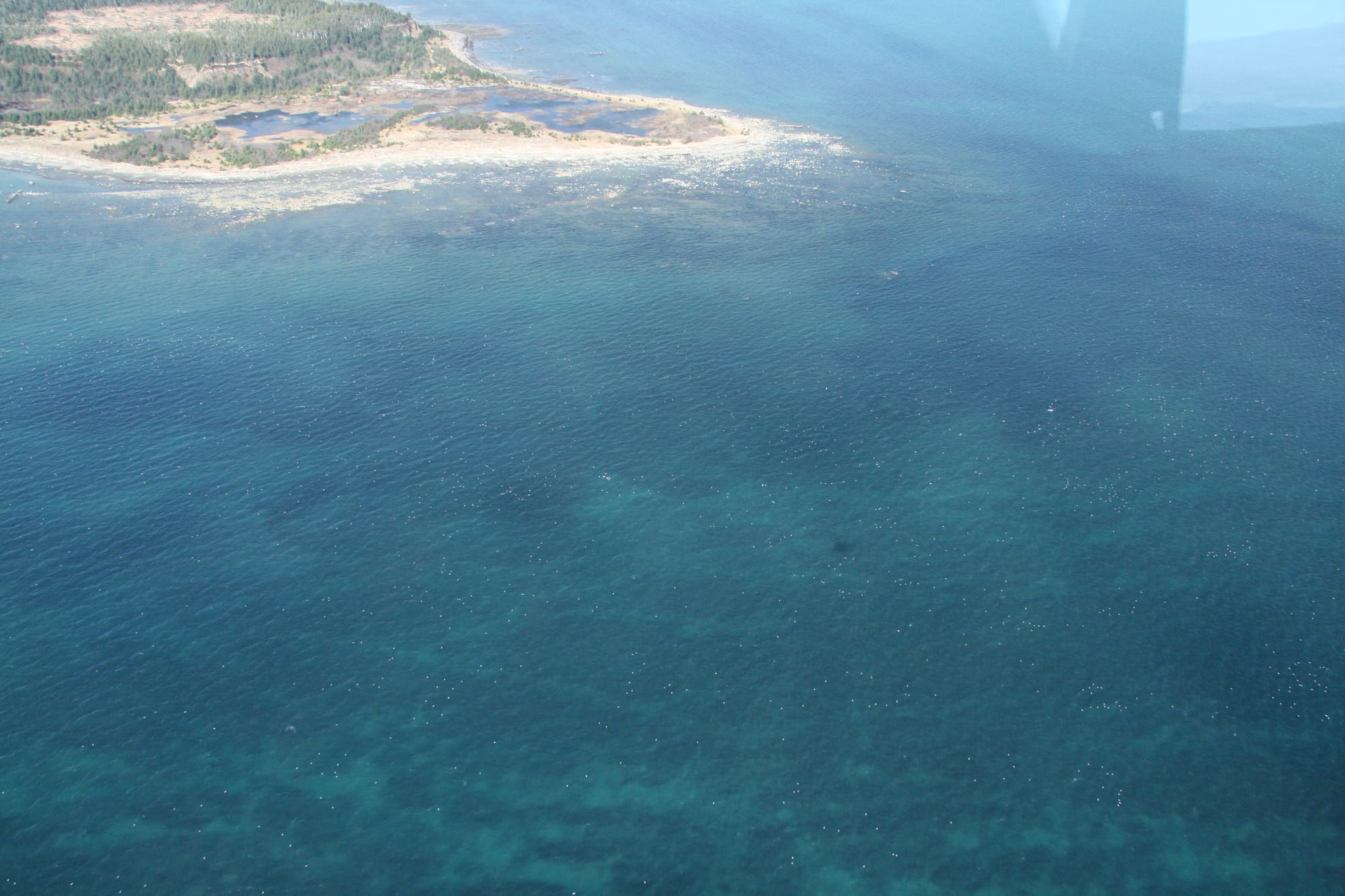
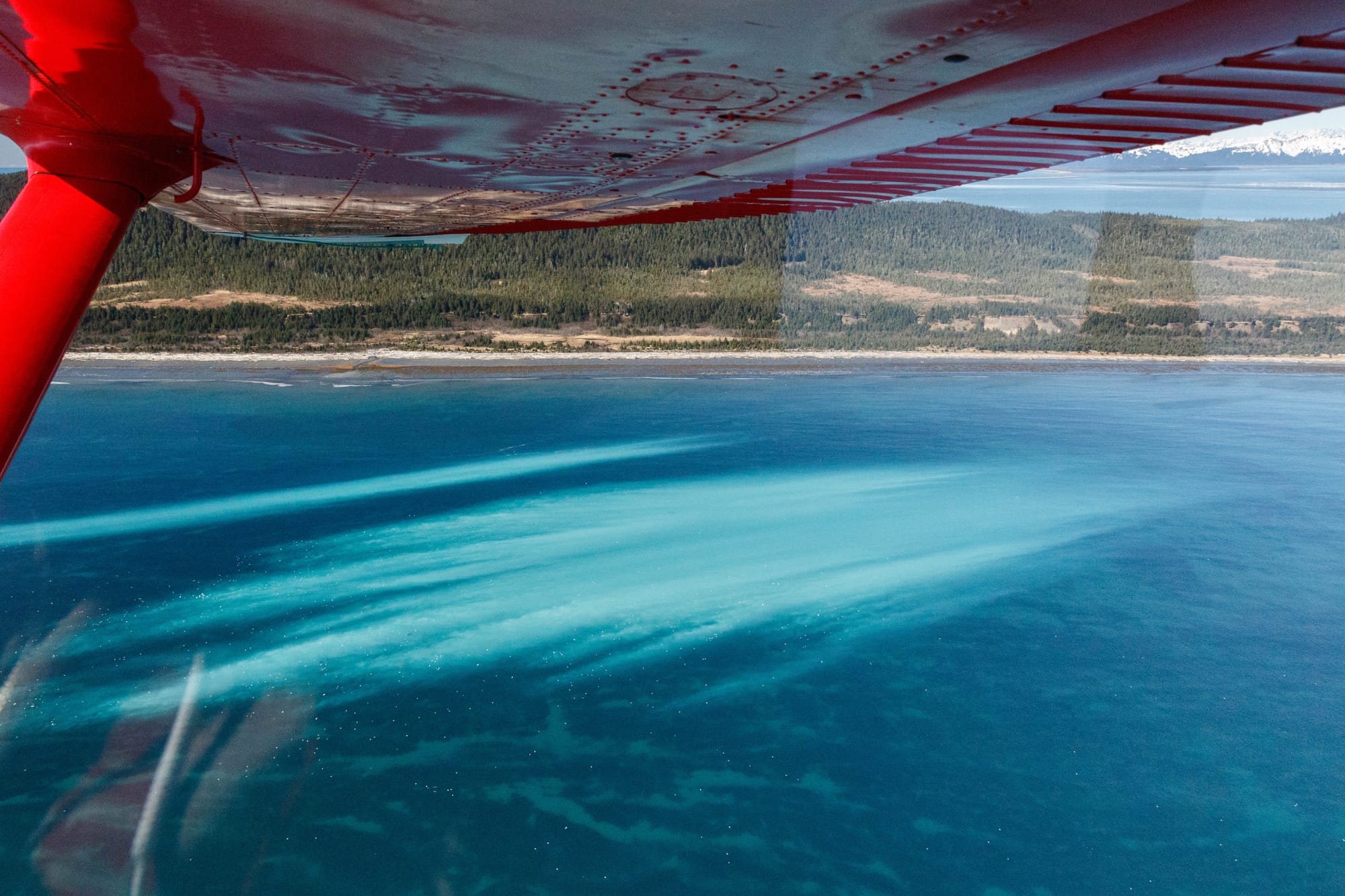
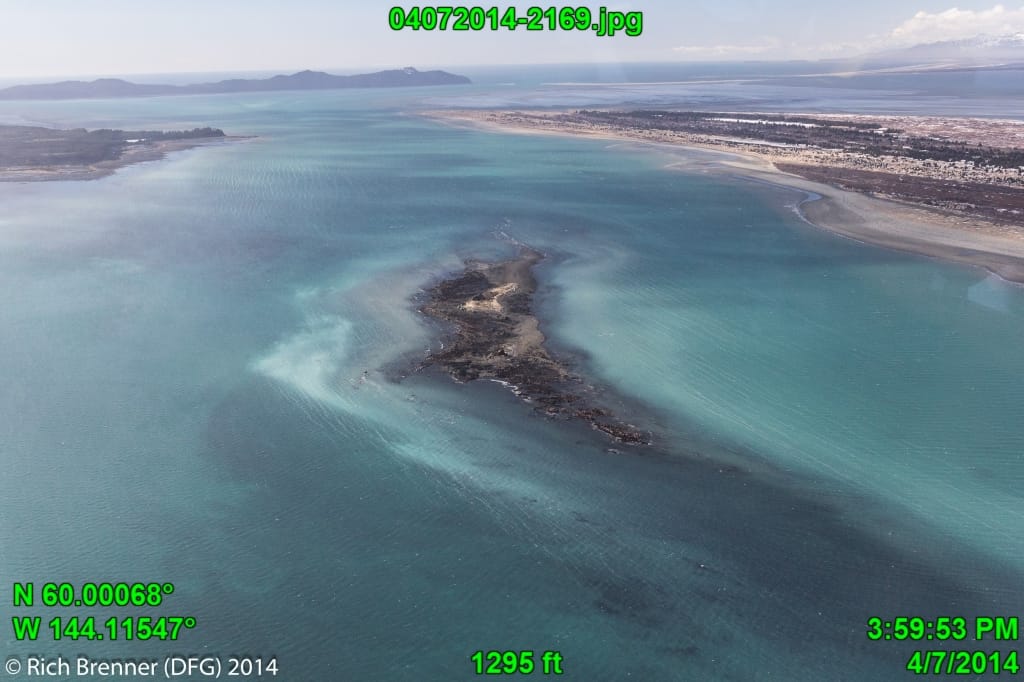
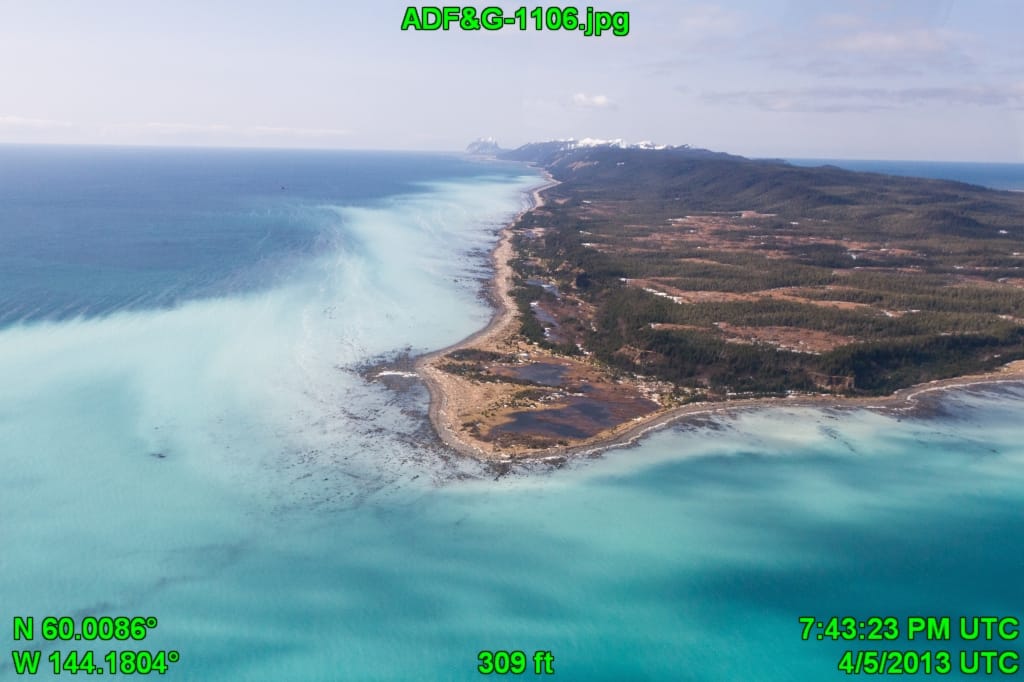
ADF&G Photos of Kayak Island spawning activity sourced from Alaska Department of Fish and Game ArcGIS interface: Left To Right, Top to Bottom - 2024-4-16; 2023-4-18; 2022-4-12; 2021-4-17; 2019-3-31; 2017-4-14; 2015-4-4; 2014-4-7; 2013-4-5. In these photos, milted water appears whiteish, while herring schools can be identified by the darker shadowy blotches in some of these photos, for instance the 6th and 8th photos.
P.S I'd meant to stop this there, but then, like clockwork, a last minute CFEC meeting was scheduled (and then rescheduled) for next Wednesday, February 5th 12th, with an absolute minimum of public notice, and it caught my attention. While the agenda, which was supposed to be available yesterday, has still not been released, the one attachment so far in the meeting notes is this internal PWS Herring Fee Modification memo.
"With only a total GHL of 121 tons available for harvest by potentially 24 participants, permit holders argue that a $600 fee is unreasonable.
It is recommended that the commission depart from the fee defined in regulation and instead look to past participation in 1998 as an indication of 2025 participation and the GHL available to predict what the total gross earnings could be. [...] We recommend that the fee for the G34E permit be set to $75. The recommended decreased fee more accurately reflects the economic reality of the fishery. The fee defined by regulation is based upon permit transactions that are 27 years old, this fee does not reflect the current value for this permit type."
After all of those pro-industry changes, after the opening up of Kayak Island for unlimited exploratory fishing on a no-less-than 30,000 ton herring biomass, it is impressive to see the CFEC straight-facedly produce such a story of woe in this moment of newly expanded access.


